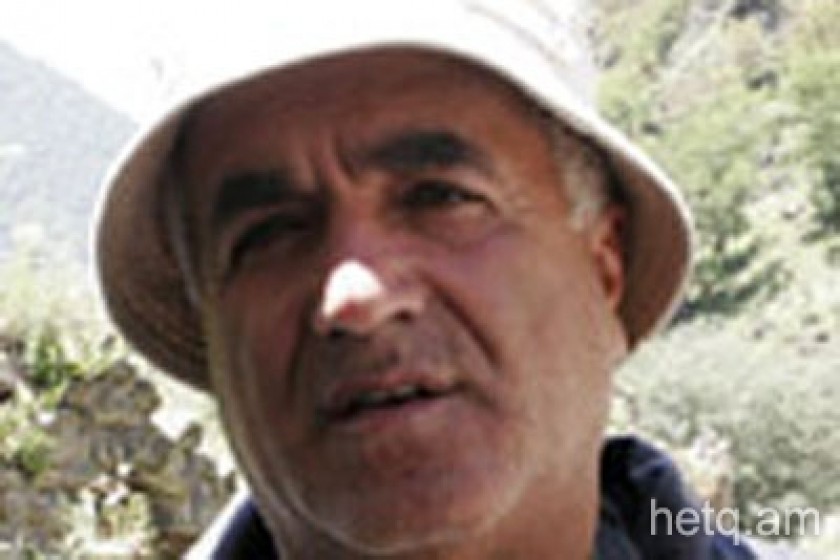
Excavations at Tigranakert Suspended
Excavations at Tigranakert were suspended on June 16 (See also: Excavations for 2007 Begin in Tigranakert, article in Armenian, as well as Tigranakert). Hamlet Petrosyan, head of the archeological group working in Nagorno Karabakh, made the official announcement about the cessation. He was at Dadivank last week where a group led by architect Samvel Ayvazyan had conducted excavations and restorations in the area around Dadi's grave.
“We have excavated a new fortress in front of Tigranakert this year, on the left hill next to Khachenaget. We have uncovered fortress walls that are 50 meters high and carved into the cliff. We have also done exploratory excavations in some areas and have come upon wonderful material,” said Hamlet Petrosyan, a doctor of history.
The excavation work was stopped because of a lack of finances. The work had been undertaken by the Yerkir Union, which became unable to keep up the fundraising as required. “We have approached the Government of Armenia, the Karabakh authorities and numerous international organizations. Typically, people just make promises, but nobody is ready to provide real help. We hope that someone will offer assistance soon so that we can work for at least another month. We came up with a budget of US $20,000 and approached the sister organizations to the Yerkir Union. As a result, a Swiss union pledged US $25,000 and the Aid for Tigranakert group in Los Angeles is trying to come up with the money, but they have only just begun work,” continued Petrosyan.
The archeologists have spent around US $10,000 in one month of exploratory work, according to their accounts.
“Excavation is very expensive in general. This is a small group, but we need at least 60 laborers a day and 10 experts if we want to do decent work. We need around US $500 a day to keep the group working and another US $500 for technical expenses like the vehicles, equipment and so on. That makes a total of US $1000 daily,” said Petrosyan.
One of the presidential candidates in Nagorno Karabakh visited the excavation site and promised to allocate US $1 million to the work after his election. Before the excavation began, the Defense Ministry of Nagorno-Karabakh de-mined the zone, which was very important and a major job, according to Hamlet Petrosyan.
“Tigranakert is a very rich city. Strabo said that that part of the country was the most fertile in the world. There are wild fig and pomegranate trees there now. The city shone white on those hills, which made for lovely scenery. Tigranakert is a page of our history that we have not been able to repeat since. The cities in central Armenia are made of tuff and basalt, which make them nice in a classic way and give them different shades of color – but they are not white. The ideal city by Greco-Roman standards was white – Aghdam was like that; Aghdam means ‘white house'. When it rains after our excavations, those pieces shine like white ribbons,” said the excavation group leader with enthusiasm.
(For further information about the excavation please visit www.tigranakert.am )
 Videos
Videos Photos
Photos




Write a comment